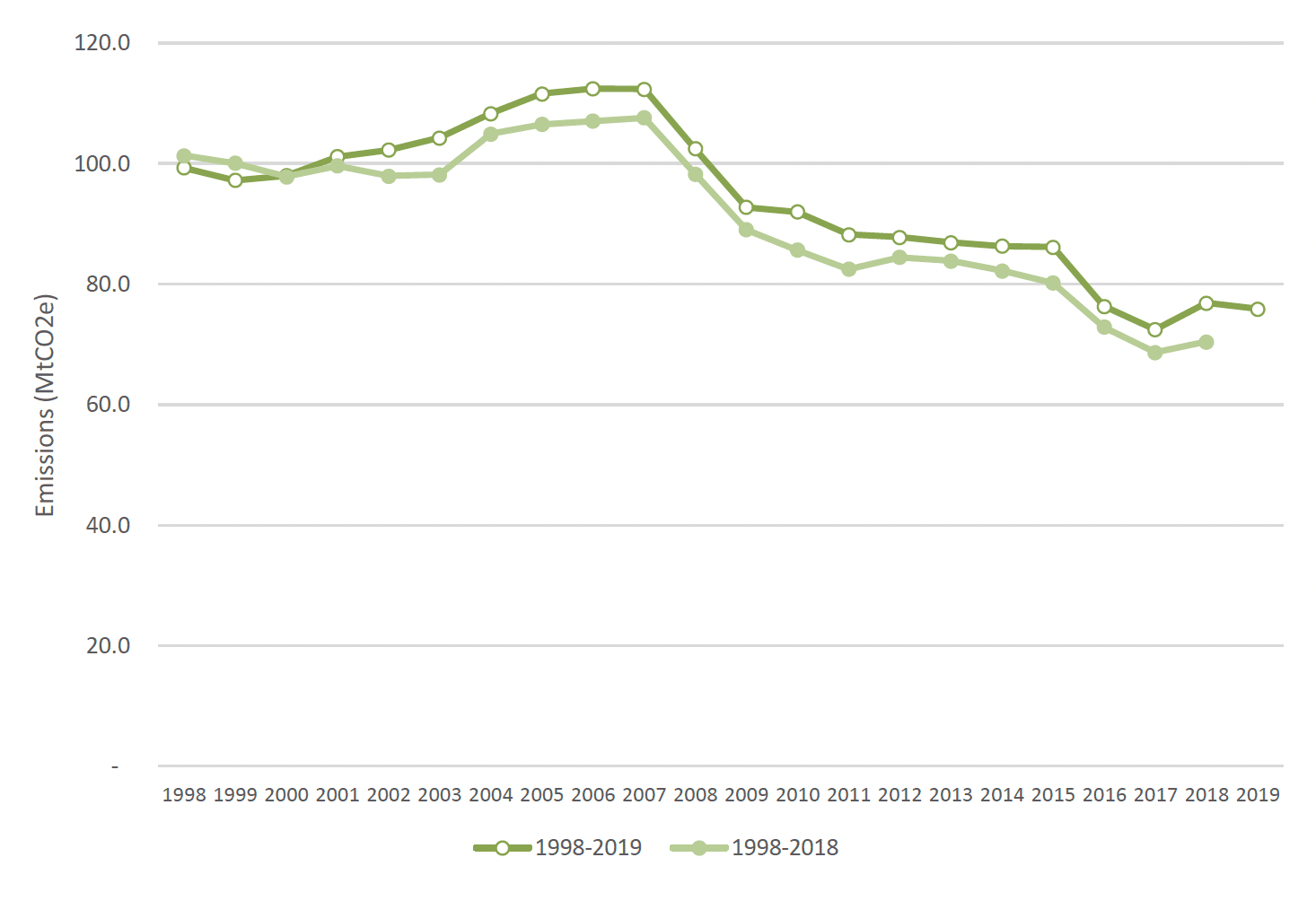Scotland's Carbon Footprint 1998 – 2019
Estimates of Scotland's greenhouse gas emissions on a consumption basis for the period 1998 to 2019.
Revisions since the previous Carbon Footprint for Scotland
There have been ten releases of the model used to estimate Scotland's Carbon Footprint.
Chart 8 shows the differences between the 2018 and 2019 releases of the carbon footprint. Revisions to previously published estimates in this release mainly relate to the latter part of the time-series with a general increase in estimated emissions from the year 2000. The reasons for these revisions relate purely to an enhancement made to the underlying modelling. The increased sectoral disaggregation of the latest model allows results to be calculated for a larger number of sectors and products since the previous release.

Revisions between the 1990-2012 and 1990-2019 publications
Since the carbon footprint was first published, successive releases have used different versions of the UK MRIO model. The 2012 release used a 2-region model which only distinguished the UK and the Rest of the World as trade regions. The 2013, 2015 and 2016 releases used a four region model, distinguishing imports from Europe, China and the Rest of World, using trade data from the Eora global MRIO. The 2017, 2018 and 2019 model adopted the same four regions but used trade data from the EXIOBASE MRIO. In this release, the UK MRIO model uses a 15 region configuration although this has been collapsed to a degree in the publication for clarity. The full 15 region detail is provided in a spreadsheet which accompanies this publication.
Future revisions to Scotland's Carbon Footprint
The next release will, similarly to the next release of Scotland's territorial emissions statistics, be presented using global warming potentials which are consistent with latest IPCC guidance. This change will act to increase the contribution of methane emissions to the total while reducing the contribution of nitrous oxide.
Leeds University continue to explore opportunities to improve the robustness and accuracy of the underlying data, and are currently exploring the use of OECD data to provide insights into trade patterns and the structure of non-UK economies. This would replace the reliance on the EXIOBASE database which is updated more sporadically.
Contact
Email: CCStatsModelling@gov.scot
There is a problem
Thanks for your feedback